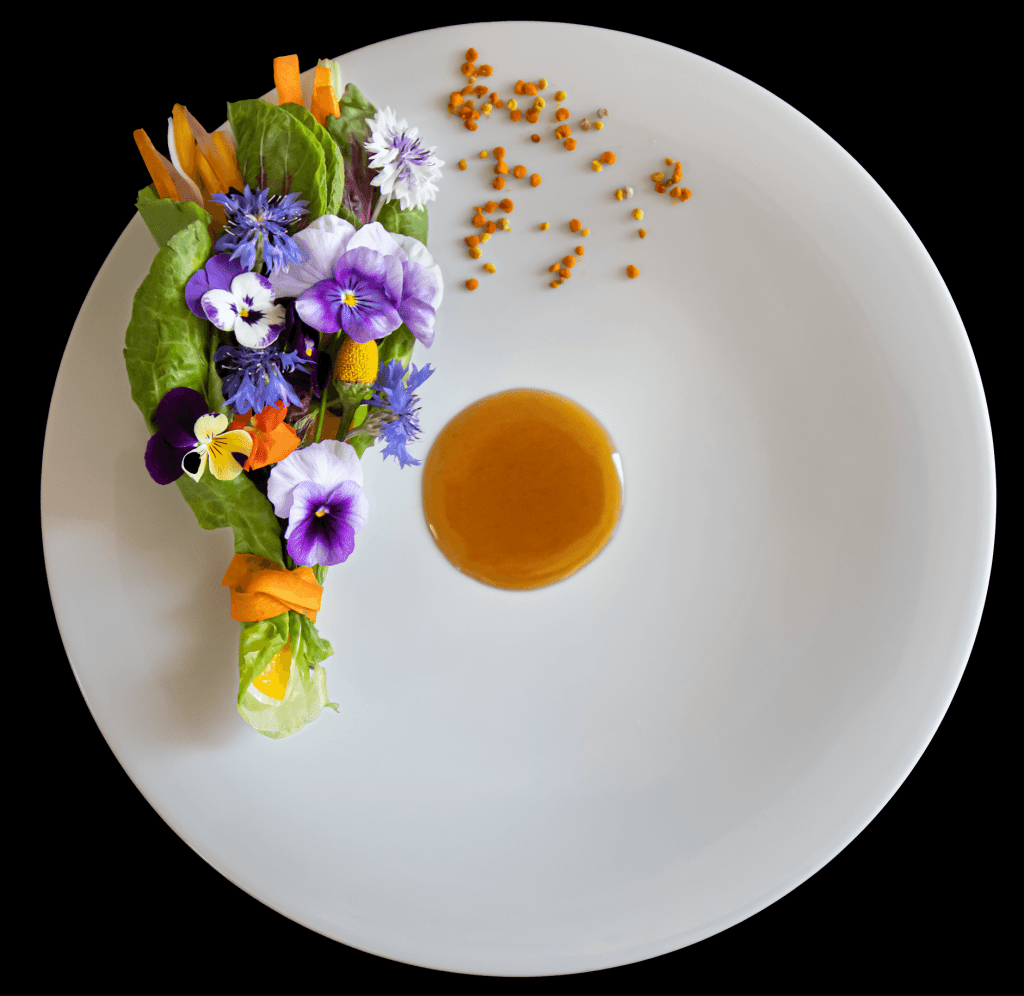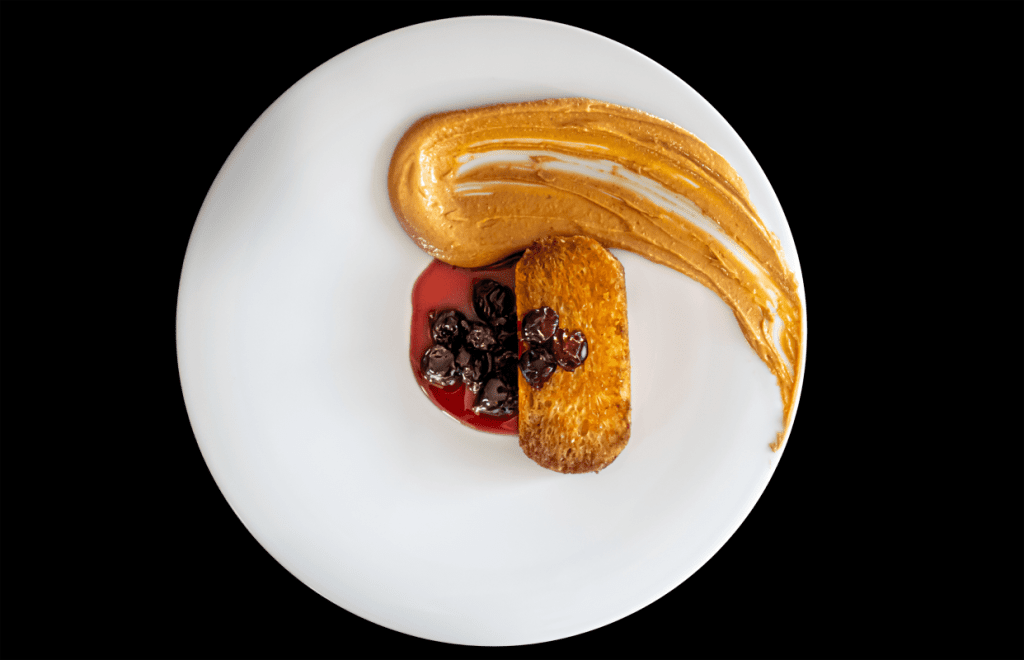If you are wondering how to plate food according to a pro Chef,
you might think that successful food plating is all about mastering a variety of puree swooshes on the plate. Well, at least that’s what you’ve seen plenty of on your Social Media feed, right? But, I’m here to tell you otherwise.
I’m here to tell you, that knowing how to creatively spread your puree on a plate might come in handy from time to time. However, this culinary skill won’t get you far when it comes to professional food presentation. On top of that, believe it or not, but food plating also have fashion seasons that come and go. Five years ago it was very trendy to splash the sauce all over the plate and place ingredients chaotically on the dish.
Two years ago everyone was obsessed with micro greens. Nowadays, none of that is considered a good taste, but rather it is preferred to follow the minimalistic Scandinavian way of plating.
So if not swooshes and not following the trends, how to be always good at food plating and be able to consistently make your food look beautiful?
Easy, I’ve created this short food plating checklist on how to plate food according to a pro Chef.
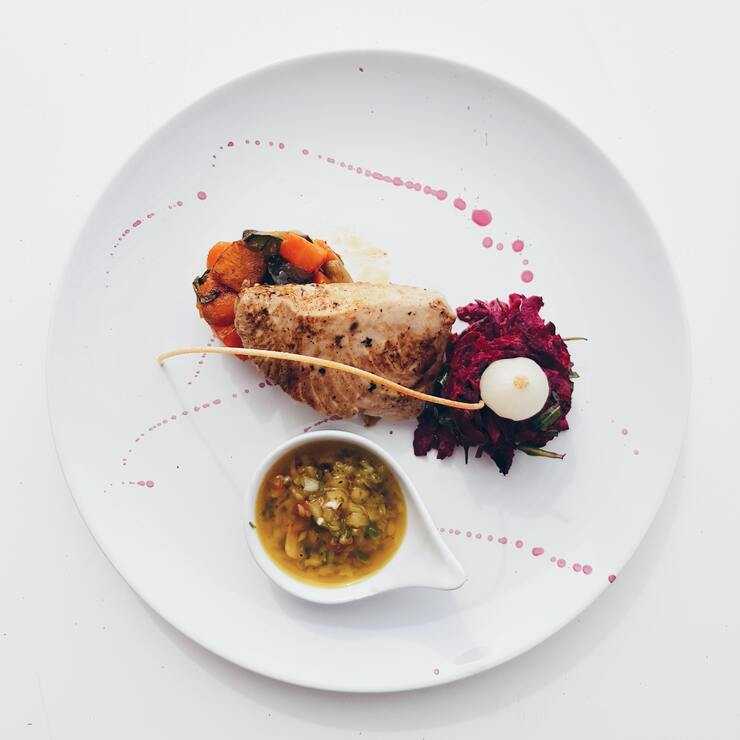


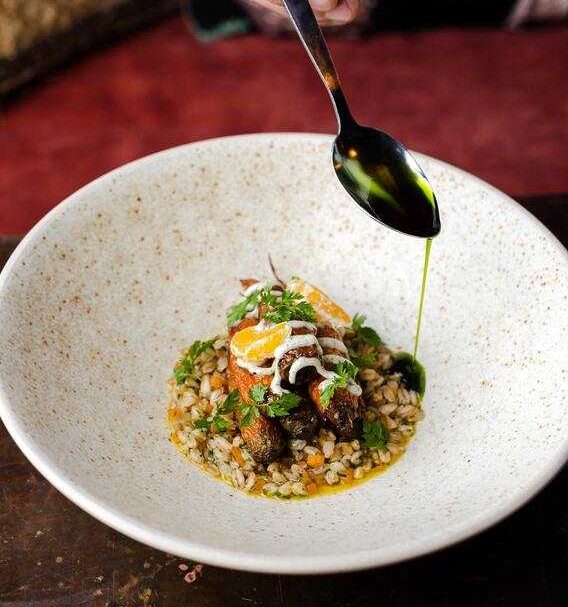
Questions you need to ask yourself
STEP 1
- Think of who is your guest? Who are you serving your food to?
- Do you have a fine-dining style meal and your guests expect elevated food presentation?
- Are you cooking food for your friends and family? Is the style of dining shared plates or individual plating?
- Or are you cooking your food for your kids, who are looking for more fun and interactive food presentation?
Make a food plating plan
STEP 2
Once you’ve identified who your target audience is and what their expectations of dining experience are, make a plan. Create several plating plans, literally draw / sketch your dish. Make sure to include colours and identify each ingredient on a plate. You’ll be surprised how many times even the professional Chefs change their initial dish recipes and all the consequent food preparation, after drawing a plating down. Ingredients and garnishes could be easily substituted at the food plating planning stage, just because of their colour or size. So, it’s always worth to put these plans down as early as possible.
Answer the question:
STEP 3
What is your main ingredient? Can you easily identify it on a plate?
Your food plating should highlight the main ingredient instead of hiding it. Garnishes and other ingredients are here to support your main ingredient and not to overwhelm the plate.
Use maximum 3 colors on a plate
STEP 4
Use maximum 3 colors on a plate, including the color of a plate (if it’s not white).
This is a general rule. If you follow it, you’ll be able to plate amazing food at all times. However, there’re always exceptions to any rules, about which I talk in more details in my free Food Plating class.
Is everything on your plate edible?
STEP 5
Although it might be tempting to incorporate some non-edible elements in your food plating… trust me, it’s not a good idea.
The non-spoken rule of food plating that all the professional Chefs follow rigorously is to avoid non-edible elements in their dishes presentation. One of the very few exceptions out of this rule could be shells from shellfish (if you serve shellfish). Otherwise, avoid at all costs, no matter how more elevated or aesthetically pleasing these non-edible items make your food look on a plate.
food styling
STEP 6
If your food styling is above casual, your food cuts must be perfect and identical. This is a very easy rule of food plating to follow, but boy, how much difference it makes.
look at your final plate
STEP 7
When you look at your final plate, do you get a sense of harmony?
If not, it’s time to make changes. Make sure there’s unity & harmony among the dish components (think of colours, sizes, shapes etc.)
Consider your plate wisely
STEP 8
Firstly, chose a plate of the right size. Too large of a plate will create an illusion like there’s not enough of food on a plate, and vice versa.
Secondly, think about the shape, color and pattern of your plate. Make professional Chefs plate amazing food with a very simplistic style by playing around plate curves of interesting patterns.
Keep sustainability in mind
STEP 9
When you are in doubt what garnish to use for your food presentation, think of the byproducts and trims from the main ingredient. Not only incorporating them in a dish will make total sense in terms of flavour combinations, but will also make your food plating more sustainable and harmonious. For example, carrot shavings can create a great gaining for a carrot dish, if dehydrated and powdered.
plating
STEP 10
Finally, consider if your plating is trendy or timeless.
Both are fine, as long as your understand it, it matches expectations of your guests and you follow all the above best practices, when it comes to plating amazing food.
P.S.: Enroll in my absolutely free Course “How to Plate Food Like a Pro Chef” Click Here.
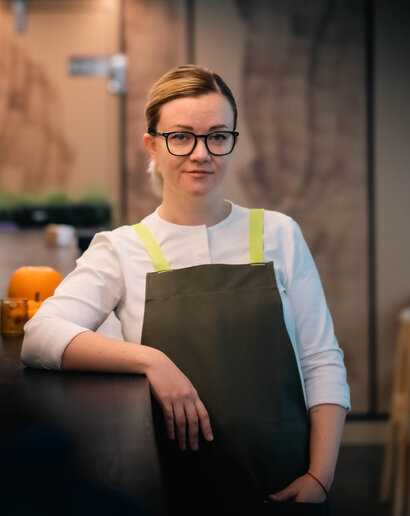
Hi, my name is Natalia a.k.a. Chef Rudakova
I’m a professional Chef and a culinary instructor. You might know me from my YouTube channel, where I showcase modernistic recipes and plating techniques, or from my collaborations with different world-known cooking brands, like FDL by S.Pellegrino & Acqua Panna and Chef Works.

